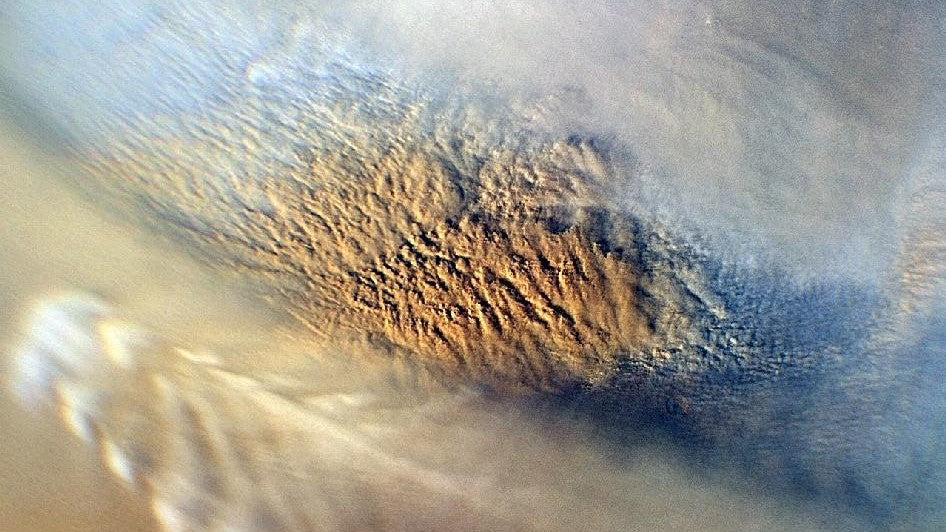
What Is The Wind Speed On Other Planets?
Share
Welcome, space enthusiasts, to a thrilling cosmic journey through the wild and windy corners of our solar system! Today, we embark on an extraordinary adventure, exploring the incredible winds that sweep across the planets in ways that leave Earth's strongest storms in the dust.
As we venture through the boundless expanse of space, we'll encounter whirlwinds of unimaginable speed, shaping the landscapes of distant worlds and revealing the unique characteristics of each planet. From supersonic hurricanes to mind-boggling jet streams, hold on tight as we unveil the fastest wind speeds known to humanity.
Join us as we uncover the secrets of these celestial gales and unlock the marvels of our cosmic neighbors. So, buckle up your space helmets, and let's dive into the awe-inspiring realm of planetary winds, where the forces of nature reach truly astronomical levels!
On Mercury, there is no wind because there is no atmosphere.
On Venus, however, there are extremely strong winds averaging around 200 km/h, reaching peaks of 400 km/h.
On Earth, the average wind speed is 11 km/h. The most powerful recorded wind speed was 371 km/h.
On Mars, the average wind speed is 96 km/h, with a peak of 344 km/h recorded during the Viking mission.
On the gas giant Jupiter, a wind speed of 643 km/h has been recorded within the famous Great Red Spot.
It is speculated that in the upper atmosphere of Saturn, winds can reach speeds of up to 1800 km/h at the equator.
On Uranus, the wind reaches speeds of 900 km/h.
On Neptune, the strongest wind in the entire solar system has been recorded, reaching 2414 km/h.
BONUS!
HD 189733b, also known as HD 189733 Ab, is an exoplanet located outside our solar system, about 63 light-years away from Earth. It is a gas giant similar to Jupiter but orbits very close to its host star, HD 189733, making it a "hot Jupiter."
Due to its proximity to its star, HD 189733b experiences extreme weather conditions, including incredibly fast winds. Scientists have observed windspeeds on HD 189733b reaching up to 8,700 kilometres per hour . That's much faster than any wind on Earth and even faster than the winds on Neptune, the windiest planet in our solar system!
Throughout our journey, we've discovered that the winds on other planets can be both mesmerizing and extreme, shaping the very essence of their atmospheres and landscapes. The forces at play in our cosmic neighbourhood are unlike anything we experience on Earth, reminding us of the vast diversity and wonders of the universe.
As we look to the skies, we find inspiration in the grand dance of planetary winds, a reminder of the intricate balance that keeps our solar system in motion. The knowledge gained from studying these remarkable winds fuels our curiosity, sparking new questions and propelling us to explore the cosmos further.
ARSE Jnr
The section where we explain the above to 5-year-olds (and Flat Earthers).
Hey there, little explorer! Imagine you're on different planets in our solar system, like visiting different lands far, far away. Let's talk about the winds on these cool planets!
On Mercury, it's like a quiet, still place because there's no air to make the wind blow. It's like being in a super calm room where you can't feel any breeze.
But on Venus, it's a different story! Imagine really, really fast cars zooming by at 200 kilometres per hour! That's how strong the winds are there. Sometimes they even go even faster, like 400 kilometres per hour! It's like being in a super speedy race!
Here on Earth, our winds are much gentler, like a soft breeze that makes leaves dance. The average wind speed is about 11 kilometres per hour, which is like a slow walk. But sometimes, we get really strong winds, and the fastest ever recorded was a super speedy 371 kilometres per hour! That's like flying in a rocket!
Mars, the red planet, also has some windy days. The average wind speed is about 96 kilometres per hour, like a fast car. And during a special mission, they found a super strong wind of 344 kilometres per hour, like a racing car!
Now, let's zoom to the big planets! Jupiter, the gas giant, has winds that can go as fast as 643 kilometres per hour! It's like being in a rocket going super duper fast!
Saturn, with its beautiful rings, also has some speedy winds. In the upper part of the atmosphere, winds can reach a blazing 1800 kilometres per hour! That's like being in a rocket going even faster!
Uranus, the icy planet, has winds that blow at around 900 kilometres per hour, like a super fast train!
And last but not least, Neptune has the strongest wind in the whole solar system! It reaches an incredible 2414 kilometres per hour! That's like being in a rocket, zooming past all the planets!
Isn't it amazing how different the winds are on each planet? Each one has its own special kind of weather. So, as we dream of space adventures, let's remember how incredible our solar system is, with its speedy winds and fascinating planets! Keep exploring, little astronaut! 🚀🌌
You’ve come this far…
Why not venture a little further into A.S.S. - our exclusive Australian Space Society.
And keep thrusting Australia into the deep unknown…
#Space_Aus





